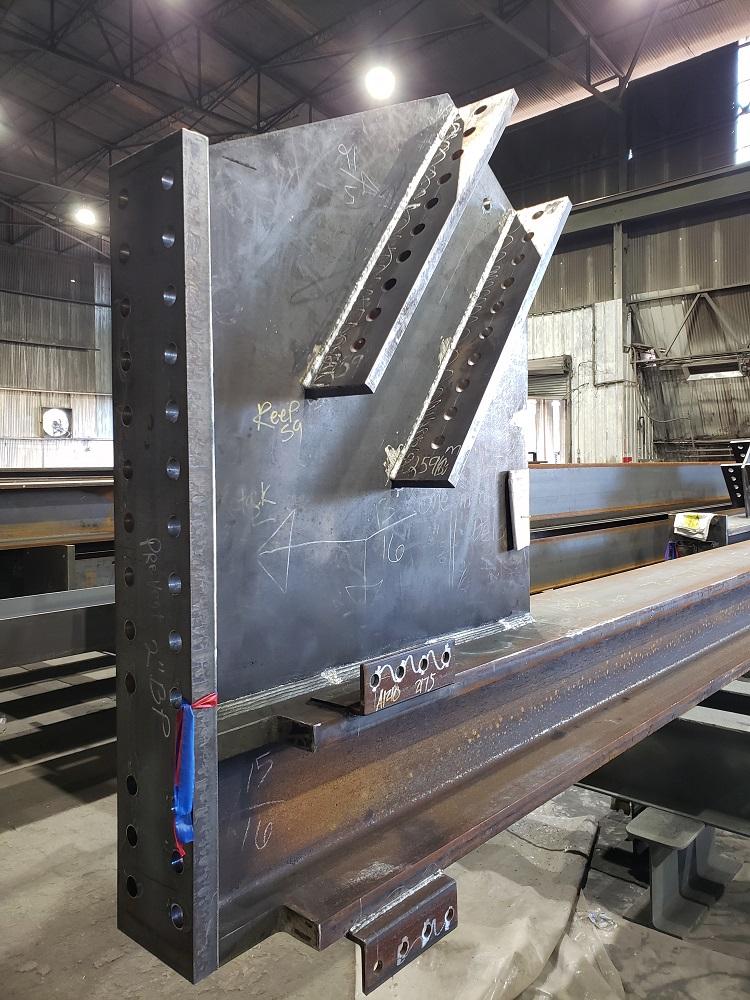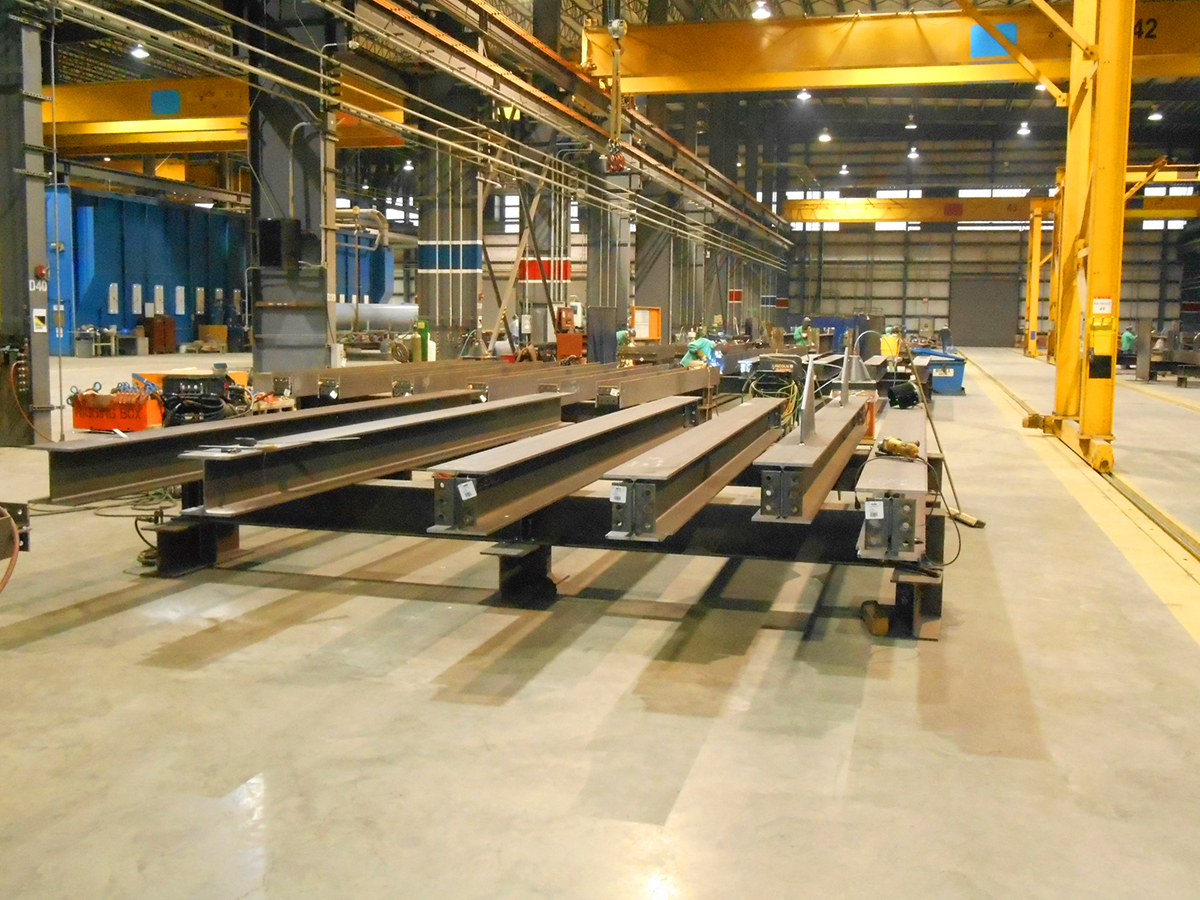Advanced Steel Fabrication Melbourne: Building the Future Today
Wiki Article
Comprehensive Evaluation of Cutting-Edge Techniques in Steel Construction Industry
As the steel fabrication sector continues to develop, the combination of sophisticated methods has actually come to be necessary for staying competitive and meeting the needs of modern manufacturing requirements. In this dynamic industry where innovation plays a pivotal role, recognizing the nuances of these sophisticated strategies is not simply a choice yet a need for those looking to create in advance in the ever-evolving globe of steel fabrication.Laser Reducing Advancements
In the realm of steel construction, laser cutting developments have revolutionized the accuracy and performance of steel shaping procedures. By taking advantage of the power of concentrated laser beam of lights, producers can now accomplish unrivaled degrees of precision when reducing with different kinds of steels. This modern technology makes it possible for detailed layouts to be carried out with very little material wastage, making it an affordable solution for industries calling for high accuracy elements.One of the key benefits of laser cutting is its capability to deal with a variety of products, including stainless steel, light weight aluminum, and carbon steel, with simplicity. The process produces tidy, burr-free edges, eliminating the demand for extra finishing actions. The non-contact nature of laser cutting lowers the danger of product contamination, resulting in higher quality end items.
Moreover, laser reducing devices can be set to make swift, accurate cuts, significantly minimizing production time contrasted to traditional reducing methods. This rate and precision make laser cutting specifically appropriate for mass manufacturing environments where performance is critical. As modern technology continues to development, laser cutting is poised to play a progressively vital duty in the steel manufacture industry.

CNC Machining Innovations
The development of CNC machining modern technologies has ushered in a brand-new period of accuracy and efficiency in the steel construction sector. Computer System Numerical Control (CNC) devices have reinvented steel manufacture by offering exceptional precision and repeatability in the production process. metal fabrication melbourne. One of the essential advancements in CNC machining is the integration of sophisticated software systems that enable real-time tracking and modifications, causing boosted performance and quality assuranceFurthermore, the development of multi-axis CNC machines has permitted the fabrication of complex steel components with intricate designs that were previously testing to generate. These equipments can execute a vast array of machining procedures, consisting of milling, boring, turning, and grinding, all with high levels of precision.
Moreover, the unification of automation and robotics in CNC machining has structured manufacturing processes, decreased lead times, and decreased the margin of mistake. This combination of advanced technologies not only enhances performance however also ensures regular high quality throughout all produced steel parts. In verdict, CNC machining technologies continue to drive advancements in the steel manufacture market, setting brand-new requirements for precision and performance.
Automated Welding Technologies
Automated welding innovations have changed the steel construction industry, improving efficiency and accuracy in the welding process. These sophisticated innovations utilize computer-controlled systems to automate the welding procedure, resulting in greater productivity degrees and improved weld top quality. One of the vital benefits of automated welding is the capacity to carry out intricate welds with consistent precision, reducing the probability of errors and remodel.Robot welding systems are at the center of automated welding technologies, using exceptional rate and precision. These systems can manage a large range of welding jobs, from simple to complex, easily (steel fixing). By making use of advanced sensing units and software program, robotic welders can adapt to variants in product and joint geometry, ensuring an uniform and trusted weld
Furthermore, automated welding innovations enhance office safety by reducing the exposure of human welders to harmful fumes and extreme warmth. As the steel fabrication industry continues to progress, including automated welding modern technologies will certainly be important for business seeking to remain affordable and satisfy the expanding needs for high-grade bonded items.
Robotics Integration in Fabrication
Utilizing robotic systems in fabrication processes has actually become a pivotal strategy for enhancing efficiency and precision in modern-day production settings. Robotics assimilation in steel fabrication supplies a myriad of benefits, consisting of raised efficiency, enhanced high quality control, and enhanced safety steps. These sophisticated robotic systems are geared up with sophisticated sensors and shows capacities, enabling them to carry out elaborate tasks with a high level of accuracy and repeatability.One of the key benefits of robotics combination in steel construction More Info is the ability to automate recurring jobs, such as material handling, reducing, welding, and setting up processes. This not just accelerates production cycles but additionally minimizes the risk of human mistake, causing higher total item quality. In addition, robots can operate 24/7, dramatically improving production output and conference tight job deadlines.

3D Printing in Steel Manufacturing
Having changed the steel fabrication market with robotics additional hints assimilation, the burgeoning exploration of 3D printing in steel production is positioned to more advance the realm of contemporary production strategies. 3D printing, also called additive production, uses unmatched layout flexibility and complexity, enabling the creation of detailed steel structures that were previously unattainable with standard production approaches. By utilizing computer-aided design (CAD) software, producers can exactly manage the layer-by-layer deposition of steel product, leading to components with improved geometries and capabilities.Among the vital benefits of 3D printing in steel production is its capacity to minimize product waste substantially. Unlike subtractive production processes where excess material is trimmed away, 3D printing only uses the essential quantity of steel needed for the last part. This efficiency not only leads to set you back financial savings however likewise aligns with sustainable manufacturing techniques by decreasing ecological influence.
In addition, 3D printing allows fast prototyping and customization, allowing for the manufacturing of little sets of complicated steel elements with short preparations. As the innovation remains to develop and come to be extra easily accessible, its combination into mainstream steel manufacture procedures is expected to drive innovation metal fabrication melbourne and performance across the industry.
Final Thought
To conclude, the steel fabrication industry has seen considerable innovations in strategies such as laser cutting, CNC machining, automated welding, robotics integration, and 3D printing. These cutting-edge innovations have reinvented the method steel items are produced, causing raised cost-effectiveness, precision, and effectiveness. Continued investment in these innovative techniques is crucial for the industry to remain affordable and satisfy the demands of contemporary manufacturing processes.As the steel fabrication sector proceeds to develop, the integration of advanced techniques has actually come to be necessary for staying competitive and fulfilling the needs of contemporary manufacturing standards.One of the vital benefits of laser cutting is its capability to handle a wide array of materials, including stainless steel, light weight aluminum, and carbon steel, with simplicity.Automated welding technologies have actually reinvented the steel construction industry, boosting effectiveness and precision in the welding procedure.Having changed the steel construction industry via robotics combination, the burgeoning expedition of 3D printing in steel manufacturing is positioned to additional breakthrough the realm of modern production techniques.In verdict, the steel fabrication market has seen substantial developments in strategies such as laser cutting, CNC machining, automated welding, robotics integration, and 3D printing.
Report this wiki page